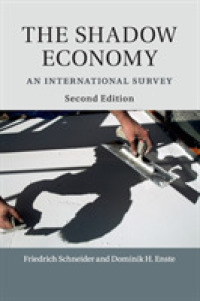Full Description
This book explores the discourse on urban and regional inequality within the framework of neoliberalism. It analyzes the widespread application of neoliberal policies in Asian city regions and identifies their influence on rising inequality. The book captures inequality through spatial and non-spatial policy narratives with empirical evidence from India, Japan, South Korea, Taiwan, and Thailand. The book uses analytics, narratives and simulation to unfold the opportunities and threats to urban regions that bear the impacts of globalization and neoliberal policies.
Lucid and topical, this book will be an essential read for scholars and researchers of urban economics, urban and regional planning, urban studies, urban sociology, political economy, public policy, governance, development studies and Asian economy.
Contents
1.Introduction Part I: Urbanization and inequality in the neoliberal era 2. Expressions of neoliberalism on urbanization pattern in developing countries 3. Polarization to mega-city regions and the urban divide: A comparative study between Tokyo and Mumbai 4. Regional disparities and five-year national development plans in emerging Asian economies: Acceptance of centralization of industrial locations to existing agglomerations Part II: Data visualization and modeling urban and regional inequality 5. Capturing regional inequality due to the agglomeration of knowledge and innovation industry 6. Mapping migration as the metaphor of urban and regional inequality 7. Understanding inequality through spatial analytics 8. Conclusion






